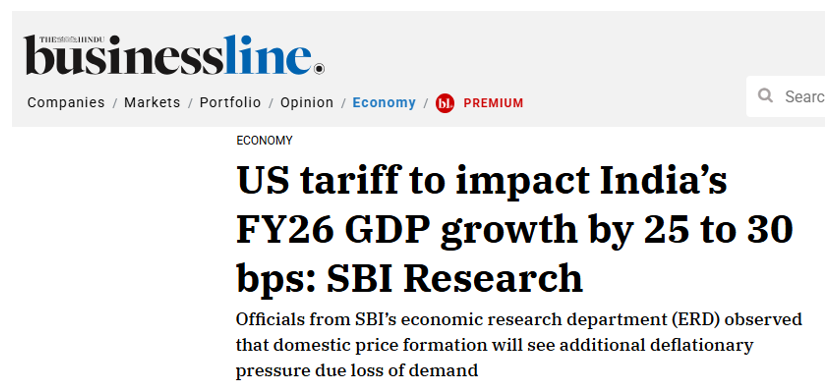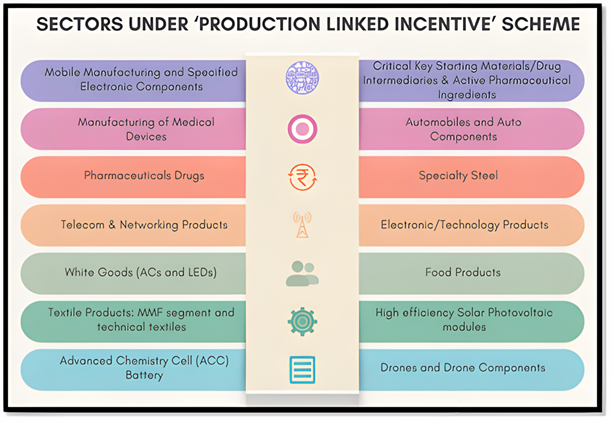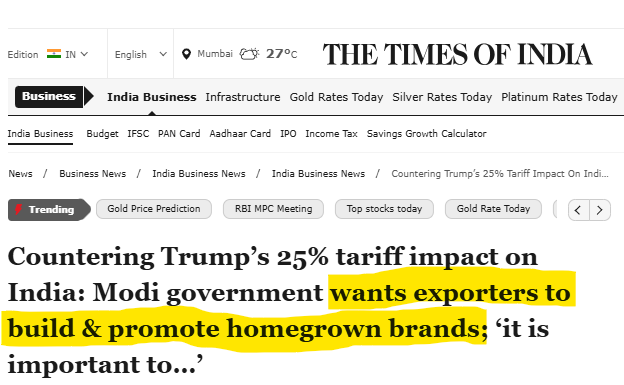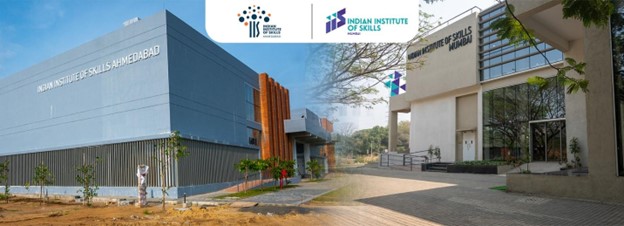

India’s economic growth story has long been powered by the service sector, including IT, banking, and finance. Today, services absorb around 30% of the workforce and contribute roughly 55% of India’s Gross Value Added and GDP, the largest share among all sectors.
Yet, the global landscape is changing rapidly. Rising US tariffs, shifting trade dynamics, and emerging technologies have highlighted the urgent need to pivot toward manufacturing and hard skills. Unlike services, manufacturing has the capacity to absorb a larger workforce, potentially scaling from 13% to 33% of total employment, making it a critical engine for inclusive economic growth.
India’s service sector relies heavily on exports to Europe and the US. Around 45% of the workforce is tied to services, making India vulnerable to trade disruptions. In August 2025, the US imposed a 25% tariff on Indian exports, threatening nearly half of India’s $80–85 billion annual exports to America.


SBI Research forecasts a 25–30 basis point direct hit on GDP growth in FY26. The message is clear: India cannot rely solely on one sector. Manufacturing offers the scale and resilience needed to absorb workforce and mitigate trade shocks.
India’s manufacturing sector is projected to reach $1.41 trillion in 2024, doubling to $2.98 trillion by 2035 at a 7% annual growth rate. Despite this, manufacturing contributes only 13–14% of GDP, short of the Make in India target of 25%.

The reasons:
The good news:

Government initiatives like the Production Linked Incentive (PLI) schemes target 14 sectors, including electronics, pharmaceuticals, and defence, creating millions of jobs. Electronics alone is projected to reach $300 billion in production by 2026.
Even as US tariffs bite, exemptions in pharmaceuticals ($9.8 billion) and smartphones ($10.6 billion) soften the blow, emphasising the need to upgrade skill infrastructure for sunrise sectors like advanced manufacturing and EV production.

The Tata Indian Institute of Skills (Tata IIS) is a flagship initiative addressing the skill gap in manufacturing. With industry-standard equipment and real-world training, Tata IIS equips trainees for high-demand roles in additive manufacturing, robotics, EVs, CNC, mechatronics, automation, and Industry 4.0 technologies.
Manufacturing jobs rose 15%, services 20%, and construction 25% over the last decade, largely driven by skilling programs like Tata IIS.
Tata IIS, a collaboration between the Tata Group and the Ministry of Skill Development and Entrepreneurship (MSDE), operates world-class campuses in Mumbai (4 acres) and Ahmedabad (20 acres).

Tata IIS blends practical experience with cutting-edge technology, ensuring trainees are industry-ready from day one.
Global markets are unpredictable. Data shows that domestic manufacturing and skill development provide both a buffer and an advantage. By focusing on Make in India and Skill India, India can:
Numbers tell a bold story: when global markets close doors, India’s answer is preparation, not panic. With more factories, trained youth, and specialised skill programs, the country is building resilience, innovation, and high-value growth.
For those choosing a career path today, the message is clear: India’s growth is powered by people, skills, and manufacturing. Programs like Tata IIS provide the training, tools, and placement support to make India’s industrial future a reality.
The journey from services-led growth to manufacturing-driven resilience starts with skilled professionals who can turn data and technology into tangible results. The world is watching, and India is ready.
© 2024 Indian Institute of Skills Mumbai | All rights reserved

Inspired by the tree of knowledge, this logo implies a tree with interspersing dots representing various skills that the institute offers, making it a wholesome skilful tree. The tree’s bark represents individuals with different mindsets coming together with a common purpose of growth. Lastly, one can subtly see the acronym IIS which also represents students as figurines.

To date, we have trained around 650 students. Our alumni are working with notable companies, such as Torrent Power, Powellite Electricals, Tata Motors, Bajaj Auto, and L&T. . Equipped with holistic technical and business skills, many alumni have also chosen the path of entrepreneurship to realise their dreams.
We firmly believe in inclusion. Identifying segments that need us the most is one of our goals. We are mindful of reaching the tribals and marginalised and ensuring maximum women participation.

Learning from the industry is at our core. Our industry partners are deeply involved, right from course design and delivery to recruitment. Our current partners include Fronius, Universal Robots, SMC, Phillips Machine Tools, Multivista, Fanuc, MIR, Markforged, Schneider Electric, Lincoln Welders, Hexagon, Formlabs, ABB, Festo, Ather, Tata Motors, Thermax, Larsen & Toubro, Bajaj Auto Ltd., Carraro, Marriott, Indian Accent, Taj, Lollo Rosso, Tomato’s, Ramada by Wyndham, Novotel, La Milano Pizzeria, Renaissance Hotels, The Fern, Tatr, IFEA, The Job Plus, Happy Faces, Sewa.

The campus is situated on a 4.17-acre land parcel at Chunabhatti inside the National Skill Training Institute campus in the state of Maharashtra. The first phase of development comprises a 22,500-square-foot facility housing advanced manufacturing and electric vehicle laboratories. The facility also includes classrooms and advanced computer laboratories for training in allied areas, providing trainees with a real-world environment akin to working in the manufacturing industry. It is equipped to train approximately 190 students at a time.
Spanning over 2.5 lakh square feet, the campus features infrastructure that includes training facilities, hostels, and dedicated spaces for student activities, supporting comprehensive learning and growth.